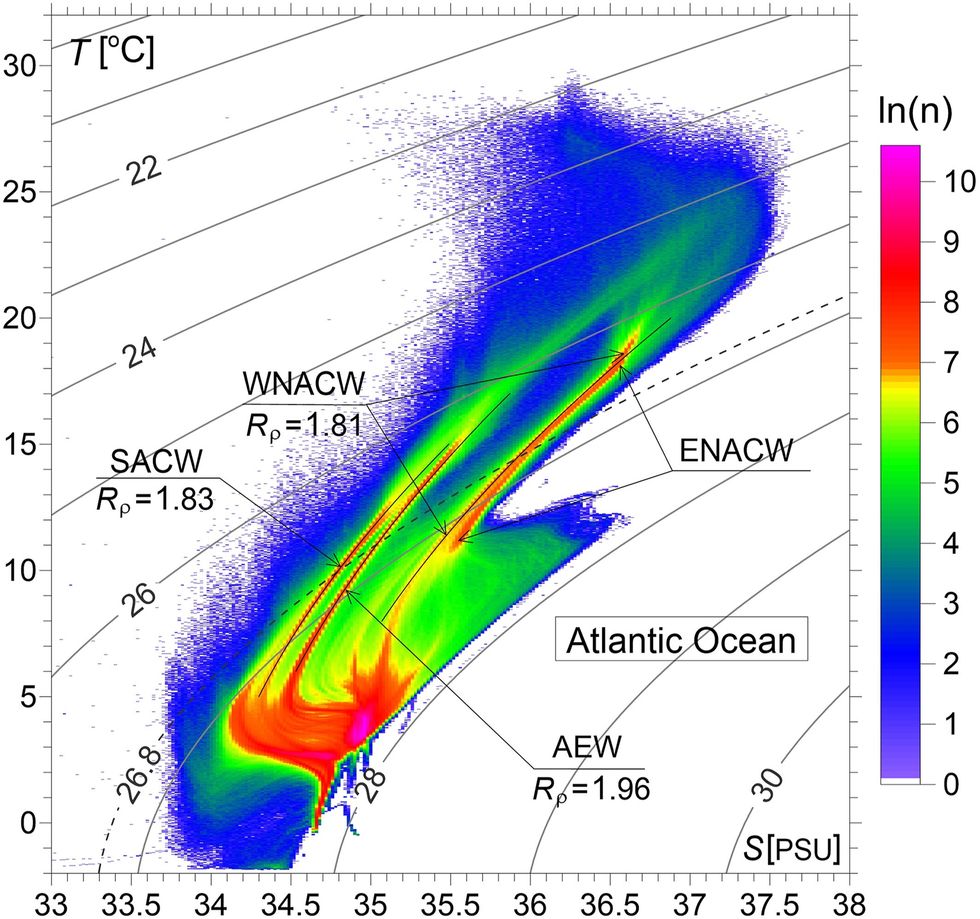Food accessibility is one of America’s most pressing issues. An estimated 5.8 million households, according to a 2009 United Stated Department of Agriculture study cited by The New York Times, and up to 29 million people, live more than a half mile from a supermarket and don’t have access to a vehicle. The lack of food security alone has been a proven factor in the road to poor health. This problem is compounded by the income inequality gap: About 45 million Americans are living below the poverty line and rely on SNAP, the Supplemental Nutrition Assistance Program, to help themselves and their families eat.
A new pilot program announced on January 5, 2017 is looking to one relatively new sector of the food supply chain to possibly ease accessibility issues in impoverished food environments: online grocers.
Even if you do have access to a vehicle, if you live in a food desert, you are constantly questioning how much gas it is going to take to get to the grocery store. Low-income job levels have also risen—almost 90 percent of families receiving SNAP have some form of work, according to the Center on Budget and Policy Priorities—forcing many SNAP recipients to work long hours just to scrape by, and while SNAP gives them food purchasing power, they have little time to do the shopping and cook at home.
The USDA’s new pilot program will give SNAP recipients a new muscle to flex that power on the internet by giving them the option of having food delivered, saving precious time and gas.
“It is exciting that USDA is considering new and innovative policy strategies to expand access to healthy and affordable foods for all, including people who are underserved by brick-and-mortar supermarkets,” says Karen Shore, director of consulting and technical assistance at The Food Trust, a Philadelphia-based non-profit dedicated to getting healthy food into the hands of underprivileged people across the country. “The more mechanisms available to make healthy food more readily available is awesome.”
Online grocers have been growing rapidly in the past few years, and The Wall Street Journalestimates that the industry could do nearly $42 billion in business in 2017, and SNAP could be another revenue stream for the industry.
[quote position="full" is_quote="true"]The more mechanisms available to make healthy food more readily available is awesome[/quote]
In September of 2012, one of the first e-commerce grocers, FreshDirect, filed for a waiver with the USDA to begin their own pilot program in two zip codes located in the South Bronx neighborhood of New York, locations which qualify as a food deserts, according to Larry Scott Blackmon, FreshDirect’s vice president of public affairs.
“Growth has been modest,” says Blackmon of FreshDirect’s program. “There was an education period, and we continue to monitor the program. But right now, we’re excited that the USDA is moving the entire program further, because we think that will only assist us in our mission of delivering the best quality, healthiest food to everyone.”
In addition to FreshDirect’s porting over to the USDA’s program in New York, a mix of national online merchants, large grocery chains, and smaller grocers will service SNAP recipients. Participant vendors include Amazon Fresh (Maryland, New Jersey, New York); Safeway (Maryland, Oregon, Washington); ShopRite (Maryland, New Jersey, Pennsylvania); Hy-Vee, Inc. (Iowa); Hart’s Local Grocers (Rochester, New York); and Dash’s Market (Buffalo, New York).
The program has been in motion for a number of years. Jalil Isa, a communications officer at Food and Nutrition Service, an agency within the USDA that oversees the administration of federal assistance programs like SNAP and WIC (the women, infants, and children food supplement program), writes in an email that the FNS began “laying the groundwork for online shopping several years before the passage of the 2014 Farm Bill. The Farm Bill required that an online pilot be conducted.”
Isa outlines that the main reason the pilot took some time to get off the ground was that retailers had to be integrated into their electronic benefit transfer system, or EBT system, which requires a customer-specific pin code.
“FNS took the time to conduct a comprehensive risk assessment to help ensure that online shopping is a safe and secure option for SNAP clients,” says Isa.
Mari Gallagher has studied food environments for years. Her groundbreaking 2006 study “Examining the Impact of Food Deserts on Public Health in Chicago” changed the public discourse about how food availability in a community can lead to a better average health, and a lack of availability can lead to public health issues beyond hunger. She sees the pilot program as a net positive.
“This is a huge opportunity for SNAP consumers as well as retailers,” she says. “It increases level of choice, without which many SNAP users would be left behind. Many SNAP customers live in neighborhoods that closest available food is at a 99 cent store or a gas station. This benefits the entire marketplace, opens new channel for SNAP, and could help snap consumers budget and plan, because systems can remember what you ordered last time. I’m still a big fan of physical grocery stores, but it will help level the playing field for consumer choice.”
Gallagher hopes that, as the program grows, other innovative companies will see the value in becoming integrated into the SNAP system. After all, SNAP can be very beneficial to companies who service beneficiaries. The National Center for Public Policy Research estimated that Kraft Foods received about $9 billion of its $54 billion revenue from SNAP, roughly one-sixth of their overall revenue in 2011. As more e-commerce companies enter the marketplace, it will lower prices for consumer as well, says Gallagher.
[quote position="full" is_quote="true"]It will help level the playing field for consumer choice[/quote]
It’s hard to guess at what Amazon will charge SNAP consumers as Amazon Fresh is currently an add-on subscription service at $14.99 per month—only available to Amazon Prime customers who are already paying $10.99 per month. (Amazon did not respond to requests for comment.) FreshDirect prices are quite a bit higher than grocery store prices, however, something Blackmon says FreshDirect will allay by not charging SNAP recipients its $6.99 delivery fee.
“There are a number of factors that will influence consumer choice, and cost is a key determinant,” Gallagher says. “But there are ways to have it be cost-effective. You’ll see more retailers respond with price-appropriate product. Shipping is getting to be very competitive, and people are getting creative and finding ways to mitigate those costs. If you have more actors able to serve that market, maybe you’ll see more food entrepreneurs step up. We have to see a pathway cut by the big players, and that’s what we’re seeing with these pilots, and it’s going crack open opportunities.”
In addition to tracking e-commerce prices that might be a reach for some SNAP recipients, the program will need to look out for a number of other challenges.
Online grocers’ ability to service rural areas that aren’t yet covered will come into question—most online grocers only serve areas of dense population—as well as how they will adapt to areas deemed high crime where packages could be susceptible to theft if delivered when no one is home. In addition to the question of how they will service Native American reservations that could be potentially hard to reach. In other words, places that might need online services most might need to wait the longest for it to be integrated into their food sourcing options.
Not only that, but there’s the possibility of distrust that delivery services will provide fresh, undamaged fruits and vegetables when the consumer is not there to select them, something Blackmon says is a problem that “goes beyond EBT” for which FreshDirect has previously done educational marketing against in the Bronx.
And finally, Karen Shore from the Food Trust believes grocery stores, even if they are difficult to get to, are often hubs of community activity.
“They anchor the business districts in small towns and neighborhoods across the country, and not just for the tax revenue and the jobs they create—which are substantial—but also because people travel to them to shop, and when they’re there, they shop in other nearby businesses,” she says. “A lot of grocery stores of all sizes in both rural and urban communities are social gathering places and they also connect to resources, whether it’s pharmacies or auto services or remittances or general store functions like hunting and fishing supplies. So there’s some risk that reducing the number of people actually traveling to and shopping in a store could have unintended consequences that don’t help a town, which is one reason why online ordering needs to be one of several strategies used to expand healthy food access.”
[quote position="full" is_quote="true"]E-commerce could be part of a comprehensive approach to healthy food access[/quote]
But she is more than optimistic about the program, which she describes as being simply a new tool in the food accessibility toolbox, which might include traditional methods like grocery stores, supermarkets, farmer’s markets, and convenience stores, as well as new models like mobile markets, co-operative purchasing, and school or community-run grocery stores, and, of course, online ordering.
“I think that the ideal situation is that everyone has access to affordable nutritious foods that they want to eat and know how to shop for and cook,” says Shore. “We do a lot of work in rural areas, and there are areas that don’t have a grocery store, haven’t had one for a very long time, the population is dwindling, and you can easily envision it could be quite an uphill battle to get a supermarket to locate there, so we need additional strategies. In places where there is a supermarket, we still need to give folks more options for convenient and healthy shopping, so that regardless of people's health or ability, or how or where people are shopping, they have good, affordable choices for themselves and their families. E-commerce could be part of a comprehensive approach to healthy food access.”
Of course, it must be noted that the SNAP program could come under challenge by the coming administration. Donald Trump has yet to announce his nominee for USDA chief, something that has rankled many across the food industry, not the least of which are farmers. There is almost no information about presumptive nominee Sonny Perdue’s stance on assistance programs, but House Republicans, including Speaker Paul Ryan, R-WI., proposed a $23 billion cut to the program under a belief—one that has been rejected by researchers—that SNAP and other welfare programs allow people to become dependent on government handouts and discourage work.
While all this goes on, the USDA remains committed to reducing food insecurity, writes FNS’s Jalil Isa.
USDA … has taken many steps in the last several years to strengthen SNAP and increase access to healthy foods,” he writes. “Recently, USDA announced a separate purchase and delivery pilot, which is designed for non-profits and government entities to improve access to groceries solely for homebound elderly and disabled SNAP participants. USDA has also provided funding to incentivize participants in SNAP to purchase more healthy fruits and vegetables through the Food Insecurity Nutrition Incentive Program; increased farmers market participation in SNAP to improve access to fresh and nutritious food: and announced final changes to increase access to healthy food choices for SNAP participants by requiring authorized retail establishments to offer a larger inventory and variety of healthy food options.”















 Yassan's GPS Drawing Project
Yassan's GPS Drawing Project



 Elon Musk poses for a photo op.
Elon Musk poses for a photo op.
 The Atlantic Ocean still holds secrets that scientists are hunting down.
The Atlantic Ocean still holds secrets that scientists are hunting down.  A detailed map was made using temperature and salinity profiles from the Argo data repository.
A detailed map was made using temperature and salinity profiles from the Argo data repository. Though you might not be able to tell one bit of water from another, scientists can and there are real consequences for the planet.
Though you might not be able to tell one bit of water from another, scientists can and there are real consequences for the planet. 

 The amazing dress began as an ambitious sketch.
The amazing dress began as an ambitious sketch. The final product, made entirely by hand, was a whimsical masterpiece
The final product, made entirely by hand, was a whimsical masterpiece